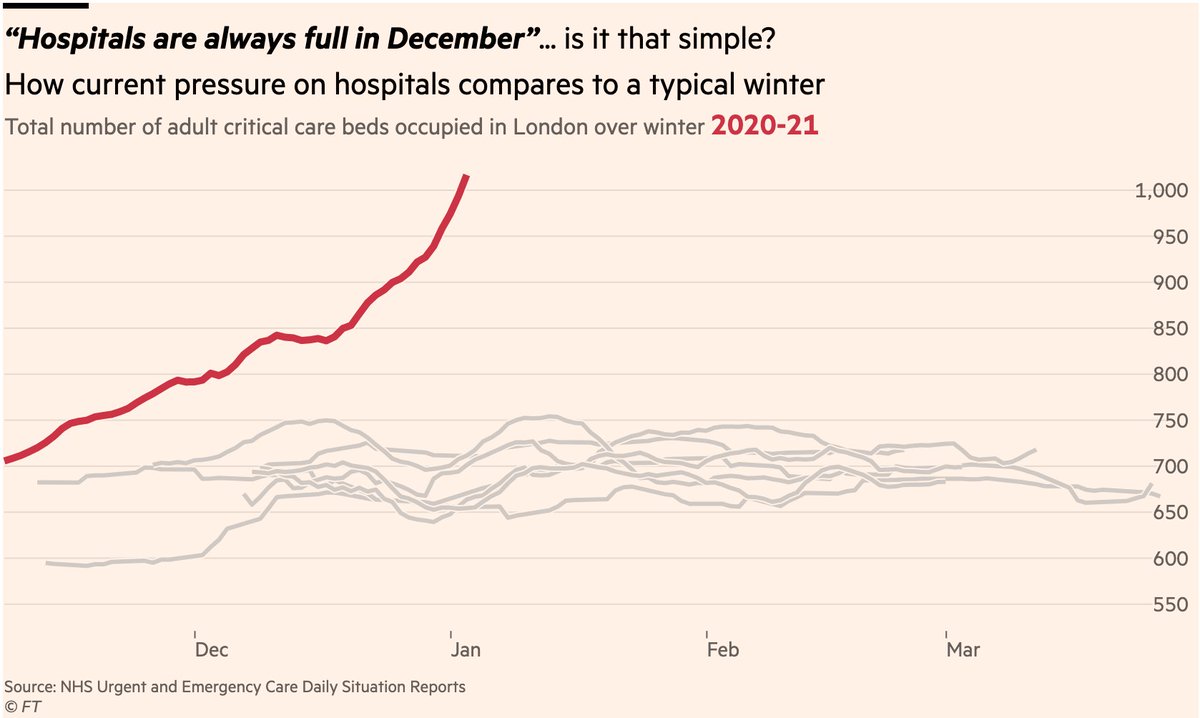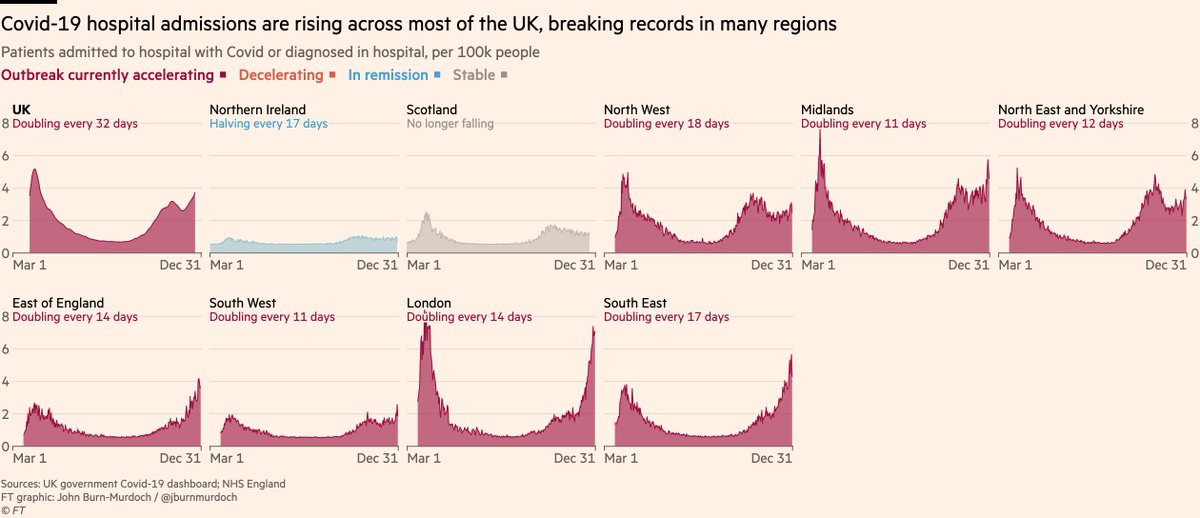
Somehow even 12 months into the pandemic, people are saying "yes but how many of those 100k UK deaths were due to Covid and how many were due to lockdowns?"
Time for a (short!) thread:
Time for a (short!) thread:
1) @PHE_uk tracks deaths by underlying cause fingertips.phe.org.uk/static-reports…
As of Jan 8, 82,180 deaths in England named Covid-19 on death certificate.
Of these, C-19 was *underlying cause* in 74,000, or 90%. These aren’t people who tested positive, recovered and then fell down stairs.
As of Jan 8, 82,180 deaths in England named Covid-19 on death certificate.
Of these, C-19 was *underlying cause* in 74,000, or 90%. These aren’t people who tested positive, recovered and then fell down stairs.
2) We also have data from @ICNARC suggesting that deaths from many other causes are actually *down* this year.
ICU admissions for trauma and even self-harm are lower this year than usual.

ICU admissions for trauma and even self-harm are lower this year than usual.
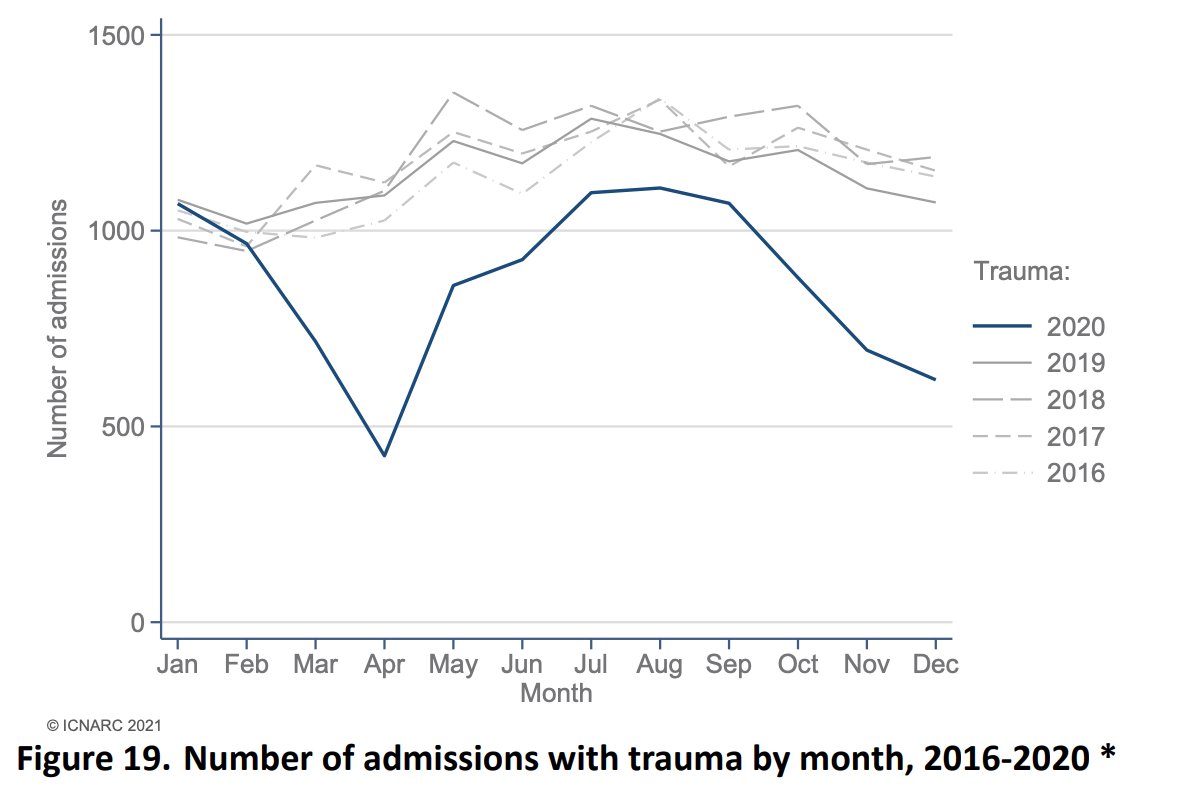
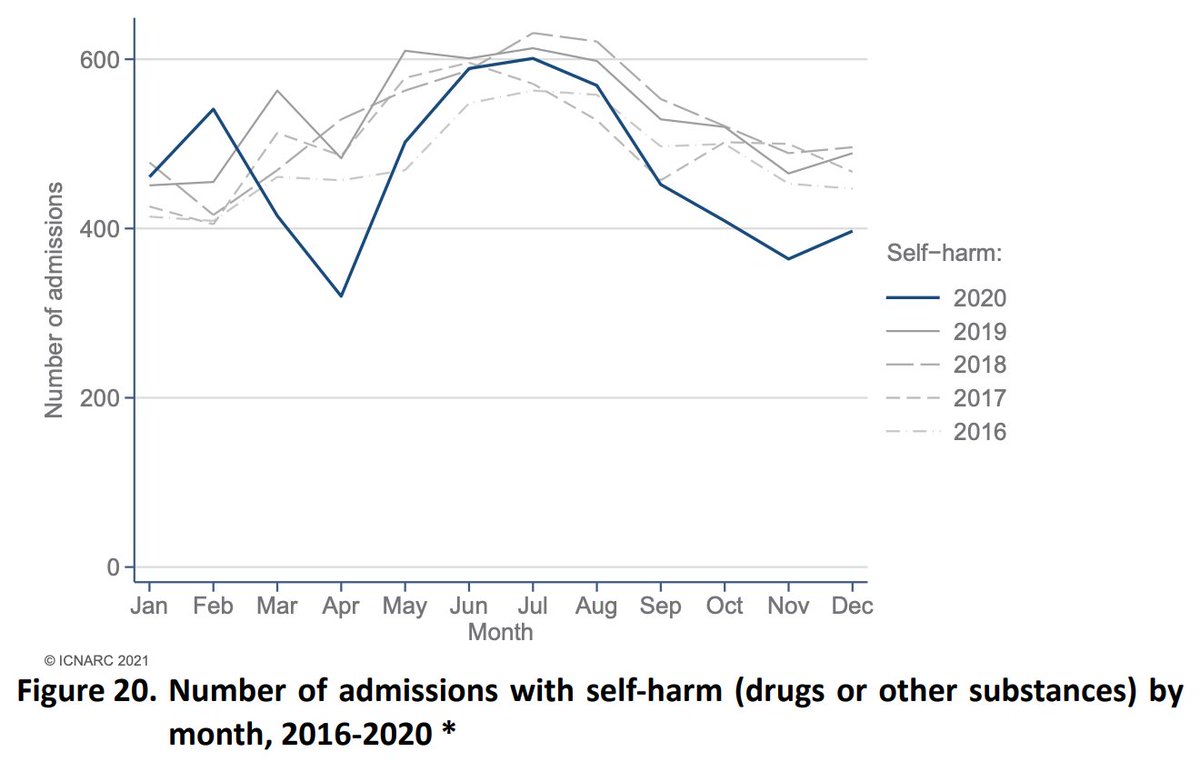
3) It is likely that lockdowns will have caused additional deaths in some poorer countries where people are tipped into extreme poverty, but in Peru the early data show deaths lower than usual for homicide, suicide & accidental deaths, especially for women sciencedirect.com/science/articl… 

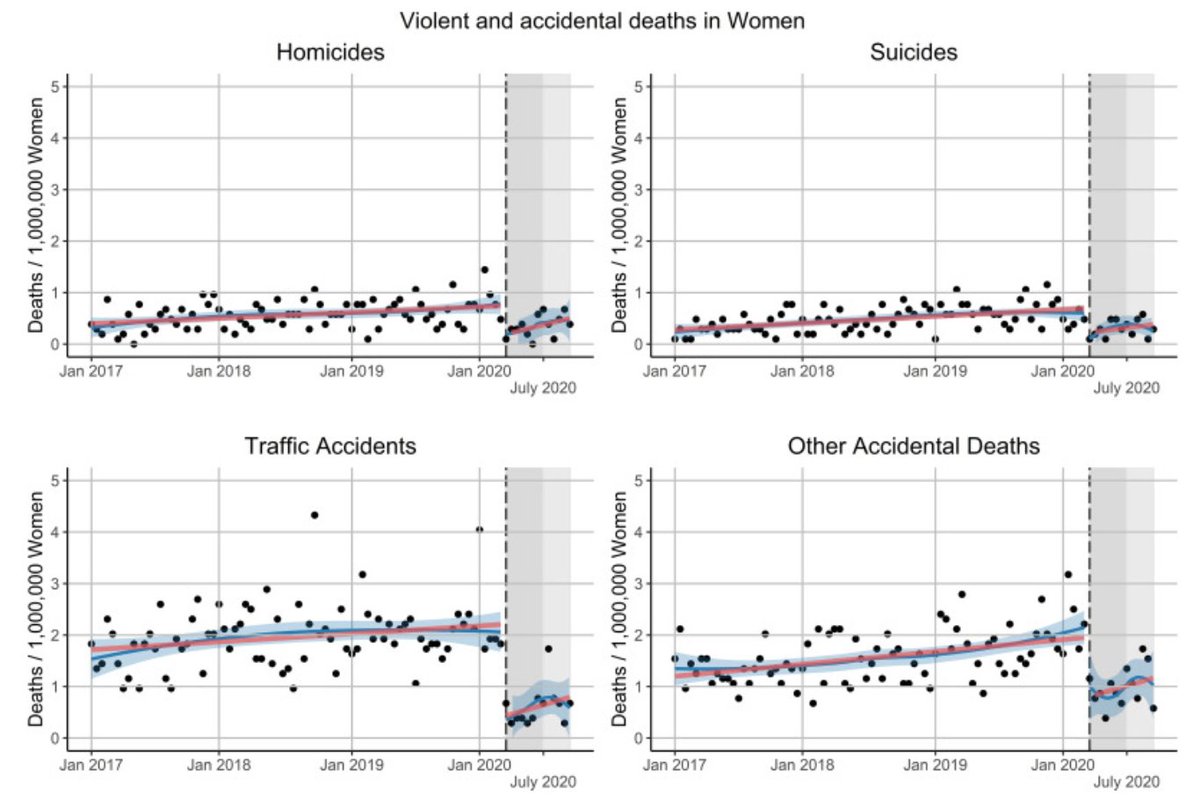
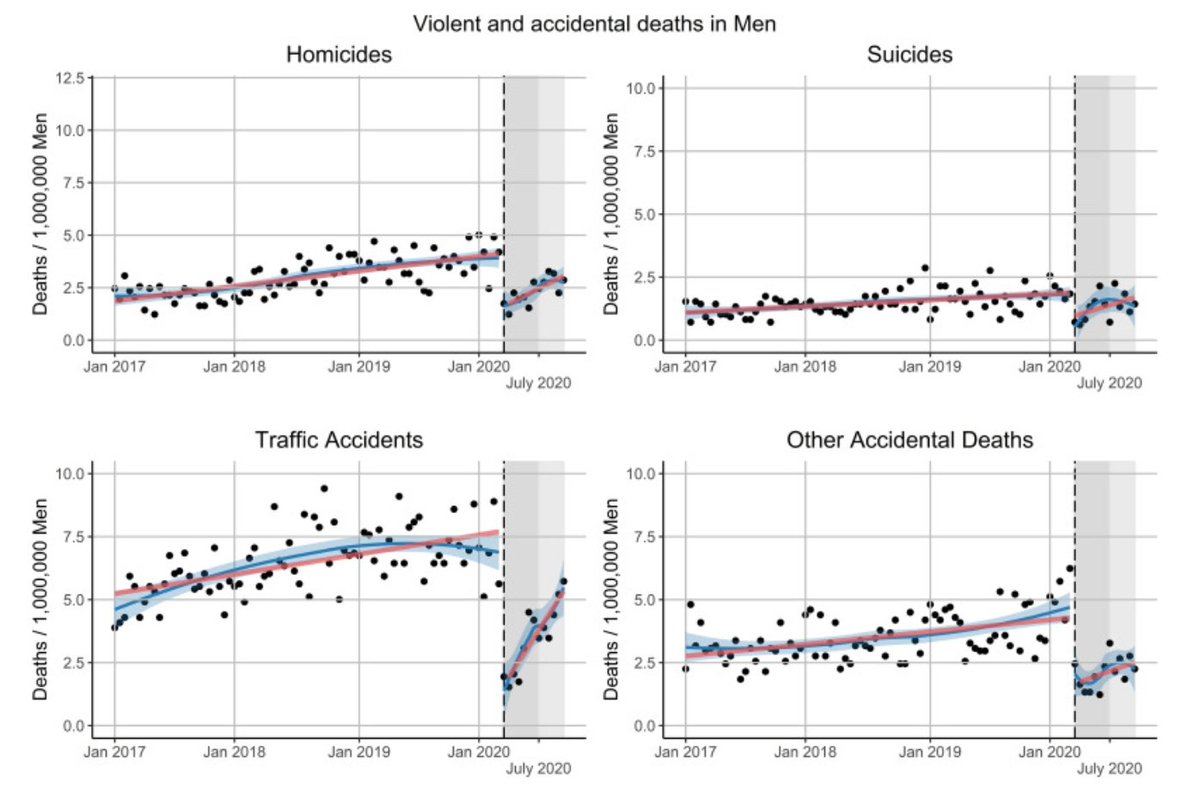
4) It’s absolutely possible that lockdowns have caused deaths in some places, but in most countries where this kind of analysis has been done, non-Covid deaths have fallen relative to normal levels during lockdowns.
That’s especially true for developed countries like the UK.
That’s especially true for developed countries like the UK.
5) Conclusion: in developed countries (and perhaps much wider), not only have lockdowns saved lives from the virus, they may also have saved lives by reducing scope for injury & other illness.
Without restrictions, deaths both from Covid & other causes could’ve been far higher.
Without restrictions, deaths both from Covid & other causes could’ve been far higher.
Obligatory caveat:
I hate lockdowns. This one has been particularly tough. But if it’s a question of restrictions followed by vaccines, crowded stadiums & people back in work, or no lockdowns but far more deaths & the collapse of the healthcare system, I know which I’d choose.
I hate lockdowns. This one has been particularly tough. But if it’s a question of restrictions followed by vaccines, crowded stadiums & people back in work, or no lockdowns but far more deaths & the collapse of the healthcare system, I know which I’d choose.
• • •
Missing some Tweet in this thread? You can try to
force a refresh








